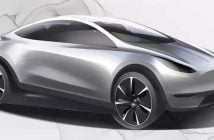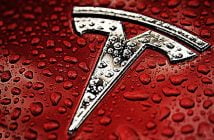+++ ASTON MARTIN hit up three trademark registration offices in an effort to reserve the name “Vanguard”. The automaker from Gaydon sent 2 requests to the European Union Intellectual Property, 1 to the Japan Patent Office and 1 to the U.S. Patent and Trademark Office on March 22. The name could be applied to the carmaker’s first battery-electric vehicle. I’ve no idea if that’s correct, but it sounds like a fine guess. 2 years ago, then-Aston Martin CEO Tobias Moers told the automaker would overhaul its conventional lineup in 2023, launch the luxury automaker’s first EVs in 2026 and convert half the lineup to electric cars by 2030. Other reports from last year indicated the brand would offer an electrified version of every model in the range by that year and launch an EV in 2025. The new Vanquish is expected to arrive in 2025 with a hybrid powertrain and there were suspicions awhile back that it would offer an electric option. The questions are: is the Vanguard the name for the rumored electric Vanquish? And if Vanguard ends up being used anywhere, and that use is on an EV concept or production car, has the timetable for that car’s appearance changed? Filing a trademark often happens in the final year or two before debut. Aston Martin just applied for the DB12 name; we expect that car on the market in less than a year. A similar span separated the Valkyrie, 2001 Vanquish, DBS trademarks from their launches. On the other hand, the Cygnet got trademarked here 2 years before its launch and the DBX 5 years. My guess is that we’ll see the EV before the timeline we might have expected in 2021. This is the brand’s 110th anniversary year, after all. Between that, the raft of new product on the way, and a stunning start to the Formula 1 season, why not take advantage of the momentum. Company boss Lawrence Stroll might also want to show investors (both those who could inject more money and those who might be trying buy a large share) that the company is ready to ride the alternative energy tide the appropriate way this time, as opposed to its last electric effort, the Aston Martin Rapide E. The electrification is anticipated to commence this year with the arrival of the V8 powered plug-in hybrid powertrain in the Valhalla, and could be bolstered by a mild hybrid system in the updated DB11 thought to be renamed DB12. +++
+++ When ELECTRIC VEHICLES first became a big deal, range anxiety was a chief concern, but that has faded as automakers deliver longer and longer range estimates with each passing year. For many buyers, that fear has evolved into questions about longevity, as people worry that their battery-powered vehicles won’t last as long as a trusty gas engine. The team at Recurrent Auto recently conducted a study to answer those questions, and the results should be encouraging for anyone considering an EV purchase. In its community of 15.000 electric vehicles, Recurrent found that only 1.5 percent have had their batteries replaced. It’s important to note that the number does not include recalls, such as the high-profile battery replacements Chevrolet initiated this for the Bolt (Opel Ampera-e). Still, battery replacements are exceedingly rare for the majority of EVs. Outside of those recalls (which also included the Hyundai Kona Electric) ,the Nissan Leaf and Tesla Model S had the most significant percentage of battery replacements. The 2 cars are among the longest-running electric models and were designed early in the EV development process, so it’s unsurprising that older cars need battery replacements after years of service. The Jaguar I-Pace, Chevrolet Volt, Tesla Model X, Audi e-Tron, Tesla Model 3 and Tesla Model Y had the next highest percentages of battery replacements, though the numbers are quite low. Recurrent’s study also looked at battery replacements by model year and found that EVs with 10 or more years on the road tend to need replacements more often. With almost eight percent of batteries replaced, the 2011 model year was the highest outside the recall years. The data is slightly skewed between 2017 and 2020 because of the massive Chevrolet and Hyundai recalls. Some individual model years were worse for specific vehicles. Recurrent found that 8.5 percent of the 2013 Tesla Model S had battery replacements, followed by 7.3 percent for the 2014 model. The 2011 Nissan Leaf landed at 8.3 percent and the 2012 model reached 3.5 percent. If you’re reading this and are still worried, there’s good news. Most battery replacements occur under warranty, which is often 8 years or 160.000 km for EV powertrain components. Additionally, battery wear doesn’t happen in a linear fashion, so you’re not going to see a steady decline in battery capacity. Recurrent found that degradation occurs in stages, with a drop at first and a leveling out for an extended period. The bad news is that if you need a replacement outside of warranty, as would be the case with a major powertrain replacement with a car with a traditional engine and transmission, the costs can amount to half or more of the car’s value. +++
+++ Henrik Fisker told analysts during a recent earnings call that Fisker could end up in the black as soon as this year, the first year of deliveries for the EV automaker’s first vehicle. There’s more good news out of Europe: The new FISKER OCEAN Extreme scored a WLTP range of 700 km on a charge, which is 80 km more than early estimates. The range figure only applies to the top-tier Extreme trim on one of the 22 inch wheel options, the FM29 platform carrying the Hyper Range battery powering 2 motors providing 550 hp and all-wheel drive. Fisker hasn’t released battery capacity specs yet, but he did tell the Hyper Range pack is “much bigger” than 80 kWh. The achievement puts the Ocean ahead of the claimed ranges of every other mass-market EV we know of that’s currently on sale in Europe. The BMW iX xDrive50 tops out at 630 km on the WLTP scheme. The Ford Mustang Mach-E can go 592 km, the Mercedes EQS SUV 397 km the Tesla Model Y 360 km. Below the Extreme, the 550 hp, all-wheel drive Ultra trim also gets the Hyper Range battery. All of Fisker’s packs come from CATL, but the Extreme and Ultra use nickel-manganese-cobalt (NMC) cell chemistry. The entry-level Sport trim comes in front-wheel drive, a single motor turning the lead axle with 275 horsepower. Its battery is called the Touring pack, employing less expensive lithium-ion phosphate cell chemistry. The automaker hasn’t released WLTP ratings for these two trims. The Ultra shouldn’t be too far behind the Extreme, perhaps 20-30 km. The previous estimate for the Sport was around 360 km on a charge. Charging specifics are also being worked out, but a 250 kW is thought to be the target. The company still expects European homologation to finish in April, deliveries starting not long after. The first 5.000 cars off the line will be the Ocean One Launch Edition, loaded with the features Fisker’s touted as differentiators like California Mode for one-touch open-air driving, SolarSky panoramic roof, a 17.1-inch infotainment screen that rotates between portrait and landscape mode, and Limo Mode that gives second-row occupants control over their HVAC output and media volume. +++
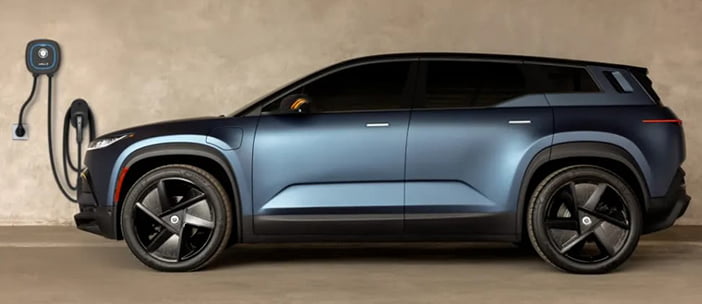
+++ Marketed as the beginning of a new era, the LAMBORGHINI REVUELTO takes the torch from the Aventador with a muscular-looking design, a more spacious interior, and a gasoline-electric hybrid drivetrain rated at 1.001 horsepower. The firm’s next flagship is new from the ground up, even its carbon fiber chassis was developed from scratch, and it blazes the path that future models will follow in the coming years. Low, wide, and head-turning, the Revuelto is instantly recognizable as a Lamborghini. And yet, it’s a new breed of bull: its headlights are tucked under the hood (rather than mounted flush with the front-end panels) and underlined by Y-shaped LED daytime running lights, while its back end is dominated by a pair of high-mounted exhaust outlets and a massive carbon fiber diffuser. One of the coolest design details is the decklid: made out of carbon fiber to save weight, it’s shaped like a U to give onlookers an unobstructed view of the new V12 engine. “I like motorcycles and it’s always fascinating to bring in some ideas from the motorcycle world. So, like this we came up with the idea of the hidden front lights”, Lamborghini design boss Mitja Borkert told. This also explains why the exhaust outlets are proudly mounted high up on the rear fascia; it’s a design cue that floated into the galaxy of cars from the world of motorcycles (especially ones designed for racing). There’s far more to the design than a few bike-inspired styling cues, though. “We have this powertrain and we were saying that it’s for sure one of the last V12s so let’s celebrate it. Let’s make it visible. That’s why the engine is completely visible”, Borkert added, stressing that his team’s goal was for the new model to unmistakably channel Lamborghini’s DNA without copying a previous, future, or existing model. Stretching the wheelbase by about 5 cm and raising the roof line by around 1,5 cm allowed Lamborghini to carve out a more spacious interior (something Aventador owners asked for). Don’t expect third-row seating and 12 cupholders, we’re talking about a supercar, but legroom has increased and there’s now space behind the seats to store small items, like a purse or a briefcase. Most of the buttons that the driver needs to access quickly while driving are located on the steering wheel: You can signal, activate the front-end lift system, turn on the wipers, and switch driving modes while keeping both hands on the wheel. Huge shift paddles are mounted behind the steering wheel. Even supercar buyers expect a long list of tech features, and the Revuelto doesn’t disappoint. It features a 12.3 inch free-standing digital instrument cluster whose graphics change depending on the driving mode selected, an 8.4-inch portrait-oriented touchscreen for the infotainment system and a 9.1-inch screen embedded into the passenger’s side of the dashboard. The passenger can configure the 9.1-inch display to show the same information that’s on the instrument cluster, and both occupants can move widgets from the touchscreen to the passenger’s screen with a smartphone-like wiping motion. This is a new layout, but Lamborghini nonetheless carried over some ideas from the Aventador: the ignition button remains positioned under a fighter jet-inspired red flap, and you pull on a lever to engage reverse. As previously reported, the drivetrain’s centerpiece is a new, 6.5-liter V12 engine that’s naturally-aspirated (Lamborghini wants to keep this configuration alive for as long as possible) and capable of revving to a screaming 9.500 rpm. The transmission is just as interesting: It’s an 8-speed, dual-clutch automatic unit mounted transversally behind the engine. In comparison, the Aventador’s 12-cylinder engine was bolted to a 7-speed, Independent Shifting Rod (ISR) automatic gearbox located in what was accurately called the transmission tunnel. Designing a new V12 in 2023 might sound crazy, but Lamborghini told me using the outgoing engine wasn’t an option. “We wanted to be ready for the next steps, so we have to have the latest technology in the car. We wanted to have not too much electric power in comparison to the combustion power. We wanted to have a performance consistency so that you don’t perceive a lag in performance on the race track. We had to improve the combustion engine’s performance output, and the old engine was at the limit”, Rouven Mohr, the head of the firm’s research and development department, explained on the sidelines of the Revuelto’s unveiling. The first of 3 electric motors is integrated into the transmission. The other 2 are up front: there is 1 per wheel, a configuration that unlocks electric torque vectoring and through-the-road all-wheel-drive (there’s no mechanical connection between the axles). Powering the trio is a 3.8-kilowatt-hour lithium-ion battery pack integrated into the space between the front seats. There’s a plug that can be used to charge the battery pack, but Mohr noted that the V12 can top it up in a couple of minutes (one of the drivetrain modes is called Recharge). Enthusiasts will have several other modes to choose from, including Città, Strada, Sport and Corsa, and the Revuelto is capable of driving on electricity alone for short distances. The system’s total output checks in at approximately 1.001 hp, though some of the driving modes limit that figure, and Lamborghini quotes a 0-to-100 kph time of 2.5 seconds as well as a top speed that lies north of 350 kph. There’s also a brake-energy recuperation system that complements the hydraulic braking system (which includes massive, 10-piston front brake calipers and a stunningly intricate cooling system) and generates electricity that gets sent back to the battery pack. The car’s brain analyzes a number of parameters, like the speed and the load distribution, to decide how to balance the regen and the hydraulic brakes. “You have 2 constant things that never change: braking feeling, independent from the driving mode on the driving conditions, and steering behavior”, Mohr said. “The Revuelto feels like a much faster naturally-aspirated car; you don’t perceive it’s a hybrid”, he added. Lamborghini will build the Revuelto in its historic Sant’Agata Bolognese, Italy, factory. The production process is fascinating, because it’s part old-school and part futuristic. Much of the assembly is done by hand, skilled men and women put together the V12, bolt on the body panels, and stitch up the seats, but most of the carbon fiber parts (including the monofuselage and the front structure) are made with state-of-the-art equipment; some of it purchased specifically to build this car. Sales will start in 2024 and pricing information hasn’t been announced yet. As for what’s next, your guess is as good as ours. It’s not unreasonable to assume that the Revuelto will spawn a convertible model, though this is pure speculation and nothing is official yet. And, the Huracán’s successor will adopt plug-in hybrid power as well when makes its debut in late 2024. Some of the lessons learned from the Revuelto will permeate this car, but don’t expect to see the exact same powertrain. “There are some things that we probably will carry over, but not 1-to-1 carry over. The whole concept depends on the character of the engine. You always have to take care that the overall components fit the basic philosophy of the car. It might be that we can re-use some of the components, but others will be different. The architecture itself, the basic setup, you will probably see in other cars”. Mohr told. +++
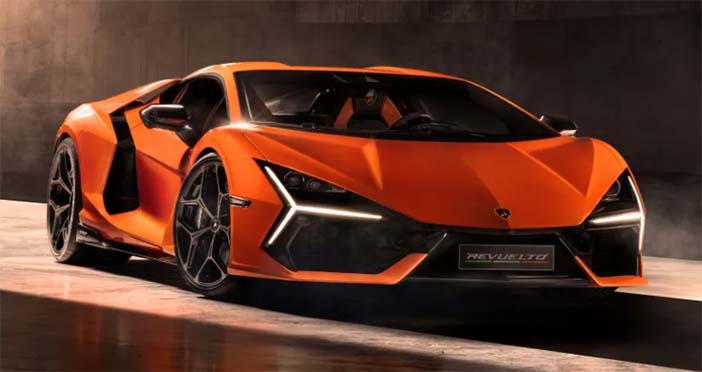
+++ The electric, retro-flavored RENAULT 5 concept introduced in 2021 will spawn a production model in 2024. Development work is ongoing, and the French company released details about the platform it developed jointly with sister company Nissan to underpin the hatchback. Called CMF-B EV, the architecture is an evolution of the CMF-B platform currently found under several mass-produced models, including the Clio (one of the bestselling cars in Europe) and the second-generation Juke sold in numerous overseas markets. Keeping costs in check was one of the design team’s main priorities, so about 70% of the components are shared between the 2 platforms. In turn, this should make the CMF-B EV platform approximately 30% cheaper to build than the architecture that currently underpins the electric Zoe hatchback. Renault stresses that the platform is modular. The wheelbase and the track are among the parameters that can be changed, so Renault, Nissan, and Mitsubishi will be able to build several different body styles on it. It’s being designed with a multi-link rear axle, which is an unusual configuration in this segment of the European market, and Renault is working on developing a more compact electric motor. It’s too early to provide technical specifications, so we’ll need to be patient to find out the 5’s horsepower and driving range. In terms of design, we’re not expecting significant changes; Renault will very likely tone down the more futuristic styling cues that characterize the 5 concept, including the headlights, but the overall proportions and the references to past models should carry over without major updates. Renault has built the first nine prototypes and its engineers have started testing them around the world. This is fairly common in the car industry: cold-weather tests are being carried out in Arvidsjaur, a town located south of the Arctic Circle in Sweden, while other tests are being performed on private test tracks far away from prying eyes. Development work will continue in the coming months, and the production version of the 5 is scheduled to make its debut in 2024. Nothing suggests the hatchback will be sold in the United States; Renault exited our market in 1987, but it’s not terribly far-fetched to speculate that the CMF-B EV platform could underpin a Nissan model later in the 2020s. +++
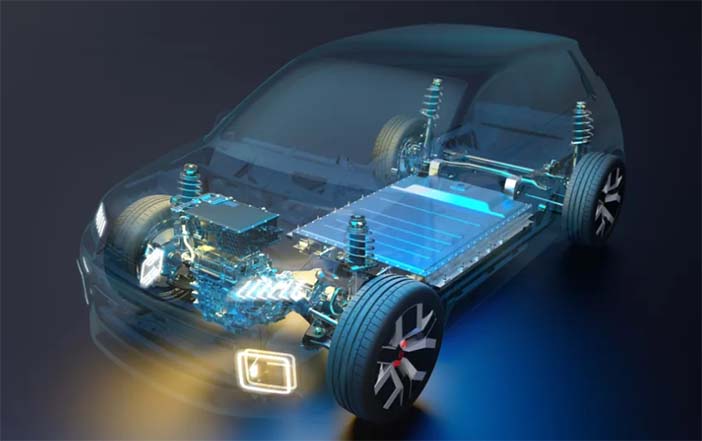
+++ In a wide-ranging discussion about sourcing materials to keep the wheels turning on the electric-vehicle evolution, the head of the STELLANTIS conglomerate outlined a “volatile” situation that may restrict EV manufacture around the globe. Speaking at a panel this week at the Freedom of Mobility Forum in Detroit, Carlos Tavares questioned the premise that EVs would become more affordable in the near term “because the raw materials” required to build them “are scarce and very expensive, and I would add very volatile”. Delving into specifics, Tavares also was critical of government regulations that are now emphasizing electricity over other possible solutions to affordable mobility. He lamented decisions “upfront, imposing one single technology instead of having a technology-neutral regulation that would create healthy competition”. Concerning supply limitations and demand, he said, “We know that we need lithium. We know that we are not producing as much as we need. We have right now 1.3 billion cars (that are) internal combustion engine powered on the planet. We need to replace that with clean mobility. That will need a lot of lithium. Not only the lithium may not be enough, but the concentration of the mining of lithium may create other geopolitical issues”. Assessing the situation at Stellantis (which was the result of a merger between Fiat Chrysler and French-based Peugeot SA in 2021), Tavares expressed confidence that Stellantis will be able to meet its goals set in its 2030 strategy and that holdups in the European Union to ban the sale of fossil fuel-powered vehicles by 2035 won’t affect its trajectory. Stellantis plans for 100 percent of its sales in Europe and 50 percent in the United States to be all-electric by 2030. While Tavares obviously focused on the positive role of the automobile in discussions about affordability and mitigating climate change, others on the panel adopted a different argument. The world’s dependency on autos limits people’s access to mobility, said Yamina Saheb, senior energy policy analyst at OpenExp, a network working on solutions for sustainable development goals. “The question from Carlos: ‘Why did the automobile win this competition?’ “, she said. “For a very simple reason: Because it’s an unfair competition, and you are a very good lobbyist. So, you managed to convince governments to stop the tram systems, the public transport system and to invest in more roads”. +++
+++ TESLA reported a record number of vehicle deliveries for the first quarter of 2023, up about 36% from the first quarter of 2022, as the company pushed to increase sales with a series of price cuts this year. The electric vehicle manufacturer reported production of about 440.000 vehicles and just under 423.000 vehicle deliveries, the closest figure to sales that Tesla reports, in the first quarter. Its Q1 earnings report is scheduled for later this month. The sales increase may be partially attributed to the price war Tesla ignited earlier this year as it slashed prices of its Model 3 and Model Y by up to 20% in January. The less expensive Model 3 and Y are Tesla’s most popular vehicles by a wide margin, as the two accounted for about 97% of the Q1 deliveries. Analysts told Insider’s George Glover and Beatrice Nolan in March that the cuts appeared to be working, as demand for the less expensive Teslas rose following the January cuts. However, whether the increase in demand offset the drop in prices, remains to be seen. The latest numbers for the company led by Eon Musk indicate a roughly 4 % increase from Q4 deliveries, when Tesla reported just over 405.000, and an increase of about 36 % from the first quarter in 2022, when it reported about 310.000 deliveries. The car maker fell short of analyst expectations from FactSet (an average of 432.000 deliveries reported Friday) cited in the Wall Street Journal and CNBC. Tesla’s stock has climbed back throughout the first quarter after falling about 65% over the course of 2022, and has risen from an early January low just over $100 to about $207 at the closing bell Friday. The earnings report will come amid a series of investigations by federal regulators into crashes potentially caused by the company’s driving assistance software, as well as reports of faulty seat belts and steering wheels. Some of the company’s electric semi trucks, which are not included in the production and deliveries figures, were recalled last month over parking brake issues. The Treasury Department also recently released new regulations for electric vehicle tax credits, which are set to go into effect later this month. They could impact the demand and affordability for Teslas and other electric vehicles as certain models become ineligible for $7,500 tax credits. +++


